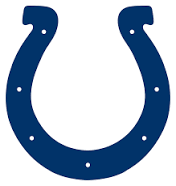Houston Texans
- Paul Grange

- Sep 23
- 2 min read

The Houston Texans are the NFL’s youngest franchise, born in 2002 after the city’s original team, the Oilers, moved to Tennessee in the 1990s and became the Titans. Houston, proud and football-mad, wasn’t going to stay teamless for long. When the NFL awarded them an expansion franchise, they chose a name that tied directly to their identity: the Texans.
It wasn’t the first time the name had been used — a short-lived Dallas Texans franchise existed in the AFL in the 1960s before becoming the Kansas City Chiefs. But for Houston, “Texans” was a deliberate choice: a declaration that this was the team of Texas’s largest city, a team built to embody the state’s independent, cowboy-meets-oilman spirit. The logo — a bull’s head split in red, white, and blue, with a lone star for an eye — blended state pride with modern style.
Cattle have been central to Texas since the Spanish introduced longhorns in the 1700s, and Houston’s rise was tied to the cattle trade and ranching industry as much as to oil. The Houston Livestock Show and Rodeo — today one of the biggest events of its kind in the world — celebrates that heritage every year, drawing ranchers, families, and businesses from across the state. The bull symbolises both Texas toughness and the economic foundations of the region: beef, leather, railroads, and the modern agribusiness sector that still plays a major role alongside Houston’s oilfields and refineries. By giving their franchise a bull’s head logo, the Texans anchored themselves in a story of muscle, land, and livelihoods that shaped Houston long before space rockets and skyscrapers.
That pride is rooted in Houston’s story. Founded in 1836, just months after Texas won independence from Mexico, the city was named for General Sam Houston, the hero of the Battle of San Jacinto. From the beginning, Houston was tied to both revolution and commerce: it grew as a port on Buffalo Bayou, then exploded with the discovery of oil at Spindletop in 1901. By the 20th century, Houston had become the energy capital of the world, its skyline built by oil money, its docks among the busiest in the United States. NASA’s Johnson Space Centre brought space exploration to town, giving Houston its other famous moniker: “Space City.”
On the field, the Texans’ history is short but spirited. Their early years were tough, but stars like Andre Johnson, Arian Foster, and J.J. Watt gave fans plenty to cheer. Watt, in particular, became the face of the franchise: a three-time Defensive Player of the Year and a civic leader who raised millions for Houston after Hurricane Harvey in 2017. More recently, quarterback Deshaun Watson lit up the field before scandal ended his Houston career. Today, under new leadership and with rookie quarterback C.J. Stroud dazzling in 2023, the Texans feel like a franchise on the rise.
Their home, NRG Stadium, opened in 2002 as the NFL’s first stadium with a retractable roof. It symbolised Houston’s ambition to blend modern technology with fan comfort, a space city with a space-age stadium.
The Houston Texans are oil rigs and rockets, Sam Houston’s victory and NASA’s countdowns, bull horns and lone stars. They are the Texans.







Comments